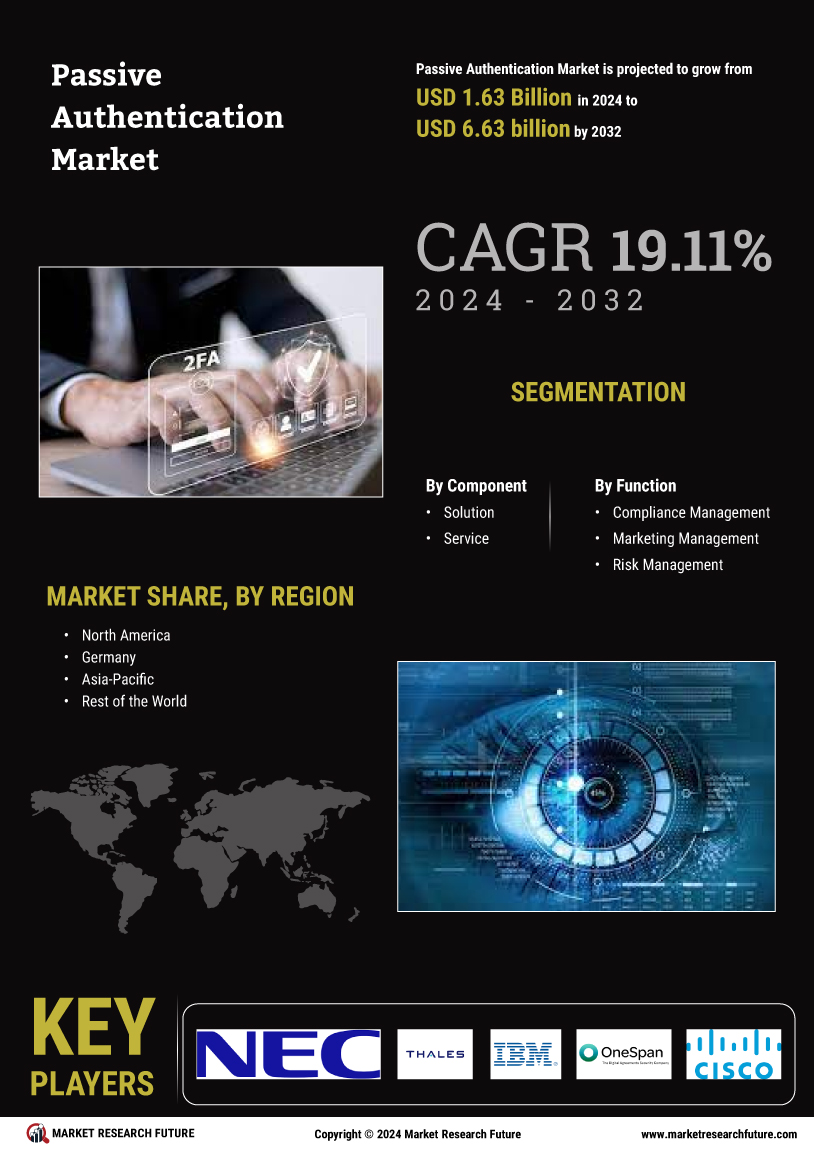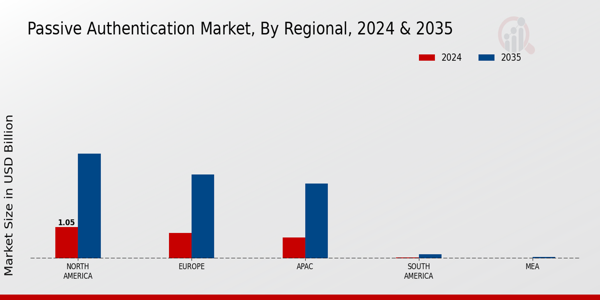Market Growth Projections
The Global Passive Authentication Market Industry is poised for substantial growth in the coming years. Current projections indicate that the market will reach a value of 2.63 USD Billion in 2024, with expectations to expand to 9 USD Billion by 2035. This growth trajectory suggests a compound annual growth rate (CAGR) of 11.83% from 2025 to 2035. Such figures indicate a robust demand for passive authentication solutions as organizations increasingly recognize the importance of balancing security with user experience. The market's expansion is likely to be driven by various factors, including technological advancements, regulatory pressures, and the evolving threat landscape.
Increasing Cybersecurity Threats
The rise in cybersecurity threats is a primary driver for the Global Passive Authentication Market Industry. As organizations face sophisticated attacks, the need for robust authentication mechanisms becomes paramount. For instance, data breaches have increased by 33 percent in recent years, prompting businesses to seek solutions that enhance security without compromising user experience. Passive authentication methods, which analyze user behavior and environmental factors, provide a seamless way to verify identities. This trend is expected to contribute significantly to the market's growth, with projections indicating a market value of 2.63 USD Billion in 2024, highlighting the urgency for effective security measures.
Regulatory Compliance and Data Protection
Regulatory compliance is a critical factor influencing the Global Passive Authentication Market Industry. Governments worldwide are implementing stringent data protection regulations, compelling organizations to adopt advanced authentication solutions. For example, the General Data Protection Regulation (GDPR) in Europe mandates strict measures for data security, pushing businesses to explore passive authentication as a means to ensure compliance. These solutions not only help in safeguarding sensitive information but also reduce the risk of legal repercussions associated with data breaches. As compliance becomes a priority, the market is expected to witness a compound annual growth rate (CAGR) of 11.83% from 2025 to 2035, underscoring the growing need for secure authentication methods.
Rising Adoption of Mobile and IoT Devices
The proliferation of mobile and Internet of Things (IoT) devices is a significant driver for the Global Passive Authentication Market Industry. With the increasing number of connected devices, the need for secure yet user-friendly authentication methods has never been more critical. Passive authentication offers a solution by allowing devices to authenticate users based on contextual information, such as location and usage patterns. This trend is particularly relevant as the number of IoT devices is expected to reach 30.9 billion by 2025. As organizations seek to secure these devices while maintaining user convenience, the market is anticipated to grow, reflecting the evolving landscape of digital security.
Growing Demand for Seamless User Experience
The Global Passive Authentication Market Industry is increasingly driven by the demand for seamless user experiences. Consumers today expect frictionless interactions with digital services, which necessitates authentication methods that do not disrupt their activities. Passive authentication, which operates in the background, allows users to access services without repeated logins or complex verification processes. This approach not only enhances user satisfaction but also encourages higher engagement rates. As organizations prioritize user-centric designs, the market is projected to grow significantly, with an anticipated value of 9 USD Billion by 2035, reflecting the importance of balancing security and user convenience.
Advancements in Artificial Intelligence and Machine Learning
Technological advancements in artificial intelligence (AI) and machine learning (ML) are significantly propelling the Global Passive Authentication Market Industry. These technologies enable systems to analyze vast amounts of data to identify patterns in user behavior, enhancing the accuracy of passive authentication methods. For instance, AI-driven algorithms can detect anomalies in login patterns, triggering additional security measures when necessary. As organizations increasingly adopt AI and ML to bolster their security frameworks, the market is poised for substantial growth. The integration of these technologies is likely to play a pivotal role in achieving the projected market value of 2.63 USD Billion in 2024.


























